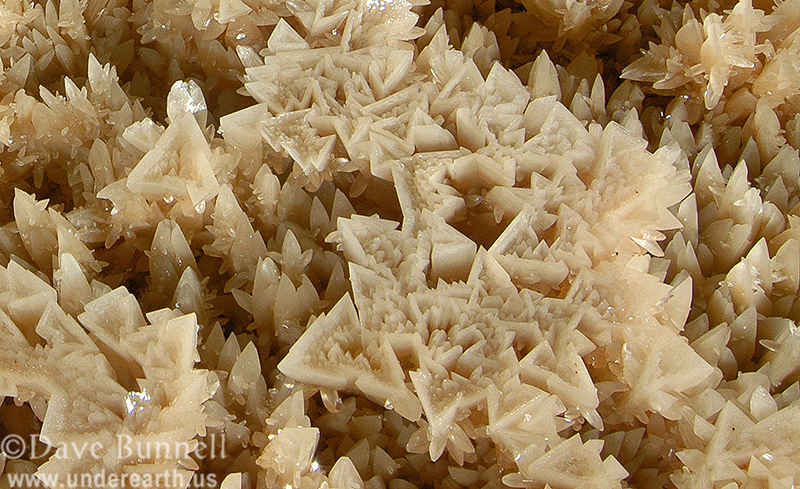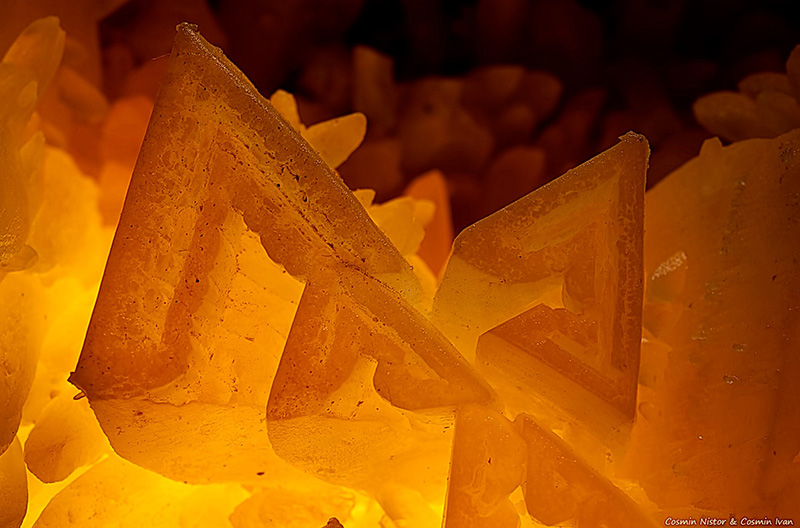
Triangular forms in caves are found in two different typs of situations. They may be monocrystals on the surface of flowstone, distinct from the usual crystal structure which is parallel or aggregates of crystals tightly clumped together and lacking perfect crystalline shapes. I don't have a photo of this phenomenon as it is unusual. More commonly, triangles are a form of pool spar and as such occur in pool basins which may be seasonally dry or wet, but deposition occurs underwater. They commonly take the form of cups that grow up to the level of the pool surface, with the tops aligned in a flat plane (photos 1, 3 and 5).They may also be filled as in photos 2 and 3. French authors Cabrol and Mangin in their book "Fleurs de Pierre" suggest that a hollow cup type of triangle requires the water level in the pool to keep gradually elevating over (likely years worth of) time, with the top of the cup growing at the same rate as the top of the pool is getting higher in elevation as its basin deepens. This might occur if the pool is a rimstone dam that is accreting material on its sides and forming an ever-deeper basin. By contrast, if the pool level is static then triangles tend to fill in rather than forming a hollow cup. It is unclear why a triangular form occurs instead of more common types of pool spar which are more pointy or acicular in nature, but one author (Tietz) suggests higher amounts of magnesium in the pool water and super saturation is involved. The triangles may be fully formed on all sides but it is not uncommon to see ones with a break in one side, such as the one in the middle of the small pool in photo 2 and well illustrated in the macro shot of the orange triangles donated by Romanian photographers Cosmin Nistor and Cosmin Ivan (photo 4). Typically triangular pool spar is 4 cm or less in width but I was shown a photo of an unusually large one measuring 10 cm in a cave in France. A related and even rarer phenomenon is hexagonal forms of calcite pool spar. Where I have observed these they have been proximal to triangles, as in photo 5. In one instance (bottom, photo 6), groups of triangles surrounded the large hexagon which might have formed under a drip that made the triangles coalesce into a larger hexagonal form. |
![]()




![]()
| Back to: | |
 |
Created: March, 2020 Author: Dave Bunnell |